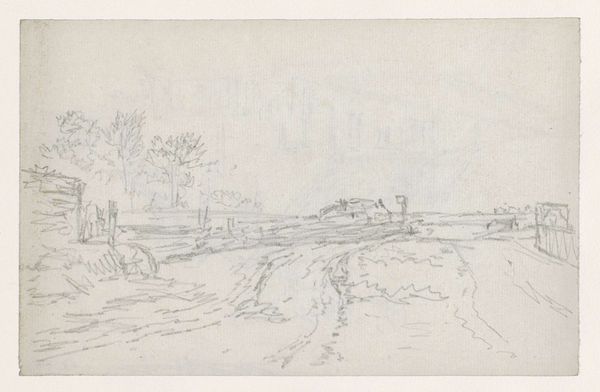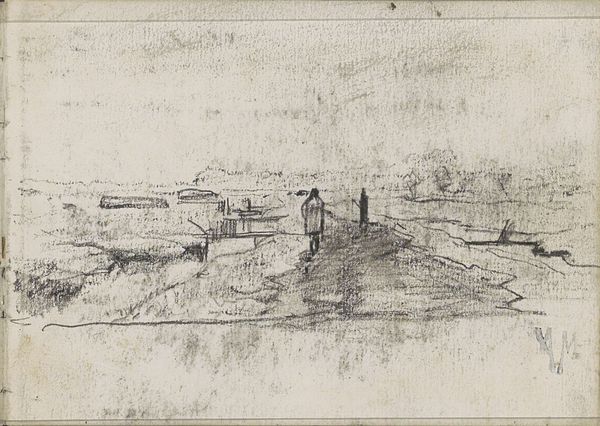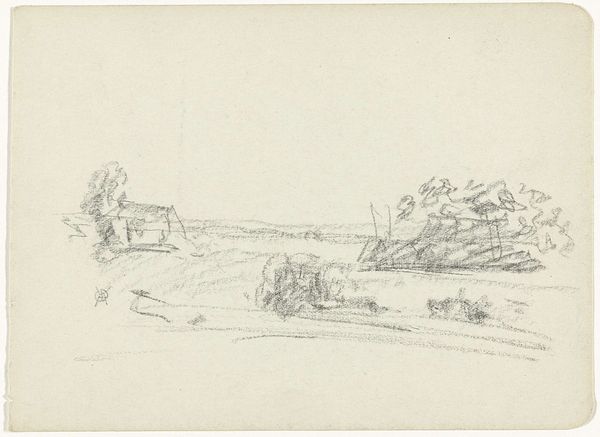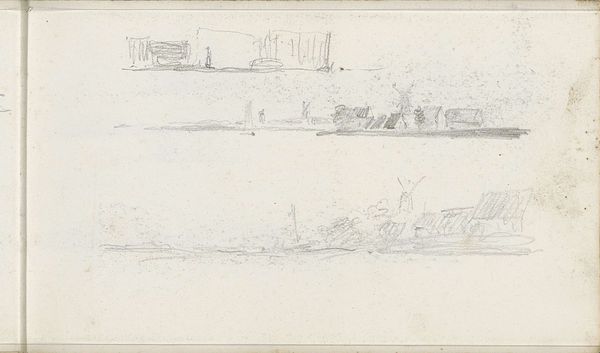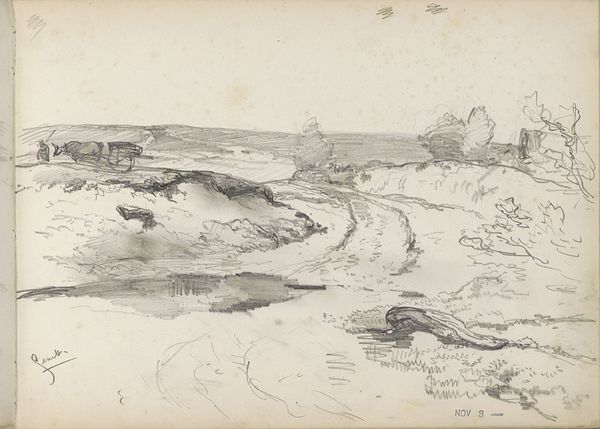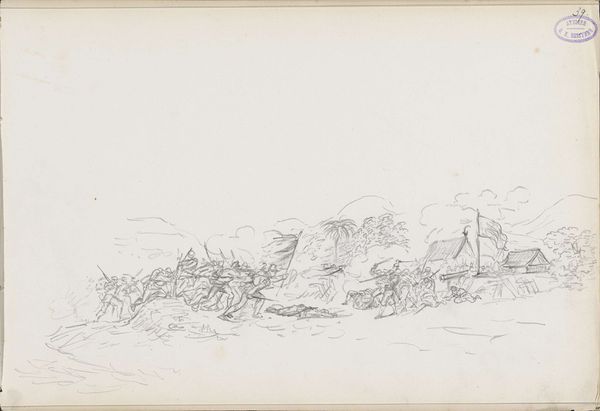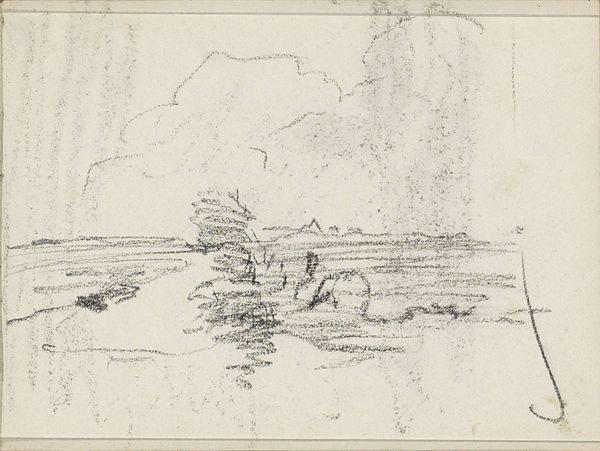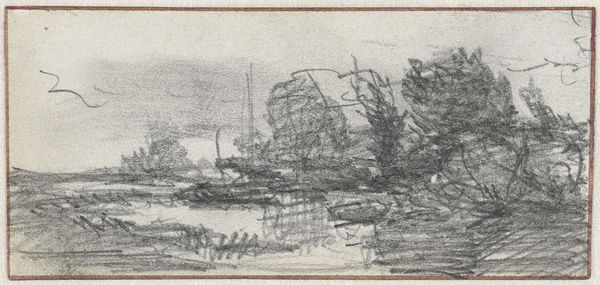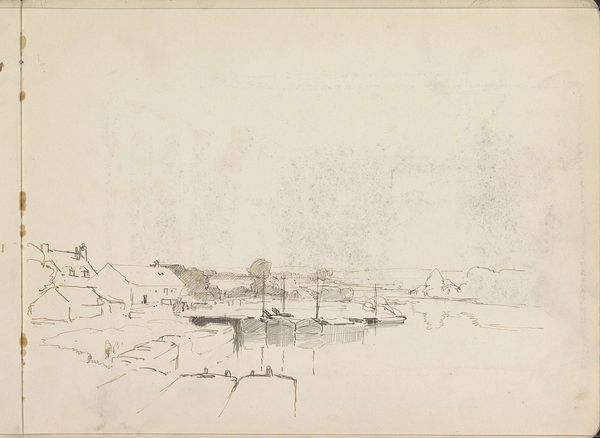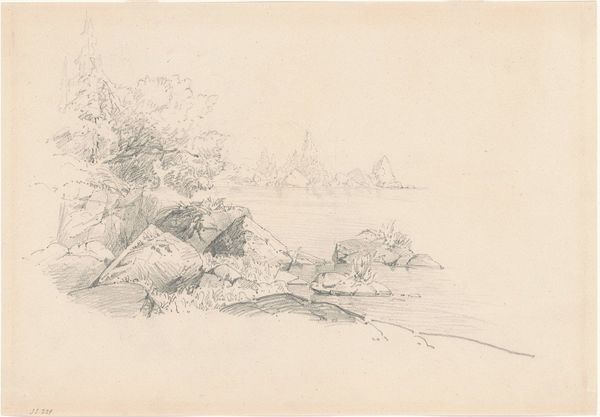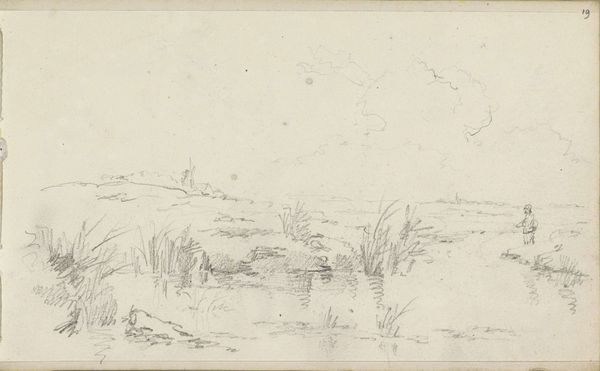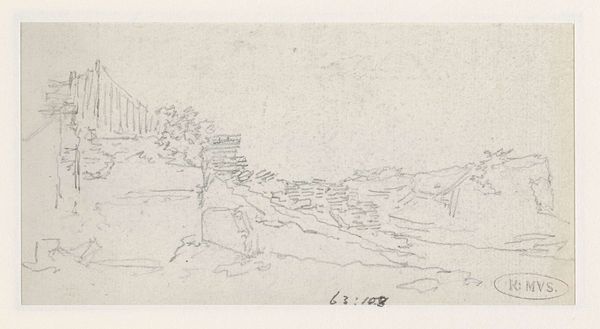
drawing, paper, pencil
#
drawing
#
impressionism
#
pencil sketch
#
landscape
#
etching
#
paper
#
folk-art
#
sketch
#
pencil
#
realism
Copyright: Public domain
Curator: Right, let's look at "In the Hayfield: Two Studies" created around 1876 by James Charles. It's a pencil drawing on paper, seemingly two different snapshots of rural life. What are your first thoughts? Editor: It feels wonderfully ephemeral, doesn't it? Almost like a memory glimpsed through a heat haze. The light, sketchy lines create such a sense of fleeting moments, you could miss the church tower at the back or the shapes hauling hay. Curator: Exactly! Those quick, suggestive lines are key. Charles captures the essence of a working landscape. What might those haystacks mean as symbols? Editor: Haystacks often signify harvest, bounty, and preparation for leaner times. Think of it: rural life and seasonal changes, where the rhythm of the year dictates so much. There's a communal aspect, a quiet industry, captured in these rough lines. Curator: You know, in many cultures, hay or straw is also connected to ideas of fertility and the earth goddess. It makes you think about the deeper connection to the land for the farmers. Do you notice how the eye jumps in-between the layers or areas? Editor: I do! Our minds wants to know which level should be the primary visual for focus. I mean that hay pile, just above the artist's name, feels so much like the raw ingredients for some farmer. Almost a symbolic look at the process or the reward after all the toiling. Curator: It's fascinating how much visual texture Charles manages to achieve with just pencil strokes. You can practically feel the rough texture of the hay, the weight of the labor, or the earthiness of the ground! Editor: Yes, those simple strokes convey layers of information that we get from symbols and life around us. Almost as if those dark pencil shades represent how memories appear faded after time. But never forgetting, because their impression is stamped with history. Curator: Absolutely. The two studies on a single page really amplify that fleeting sense, two takes on the same activity, slightly different, reinforcing the ephemeral nature of lived experience. Editor: Thinking of those cultural touchpoints helps root my impression into a new frame. Wonderful, I am walking away thinking and considering from the new perspective now. Thanks.
Comments
No comments
Be the first to comment and join the conversation on the ultimate creative platform.
